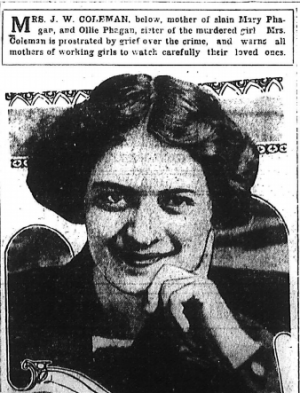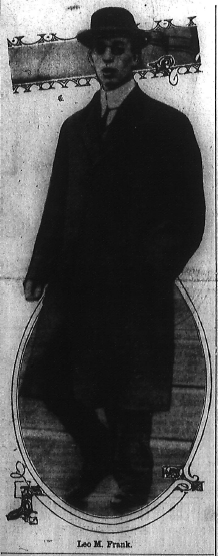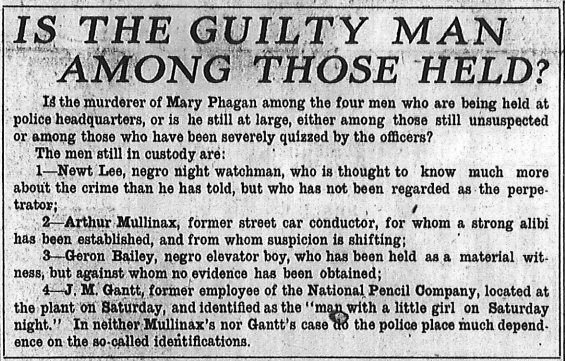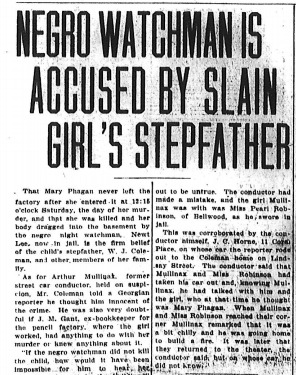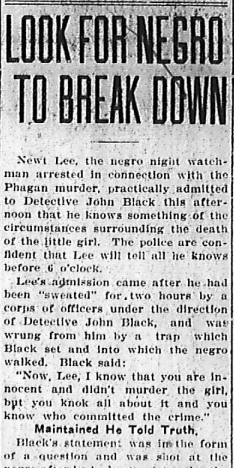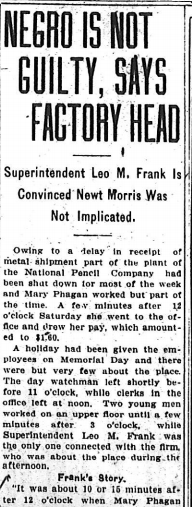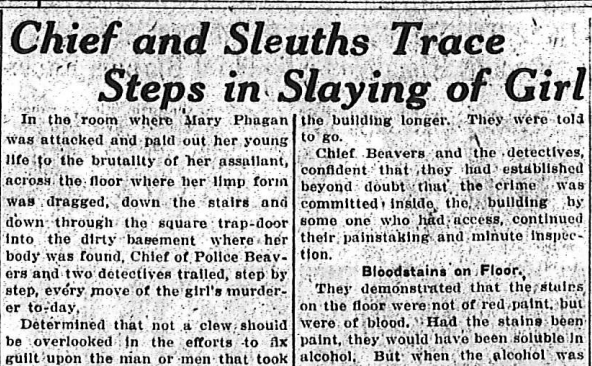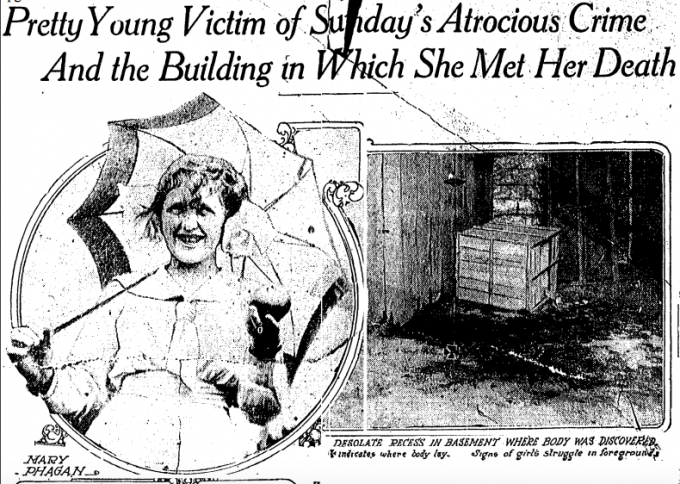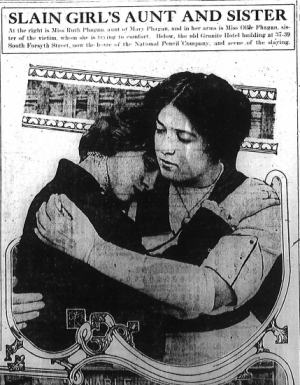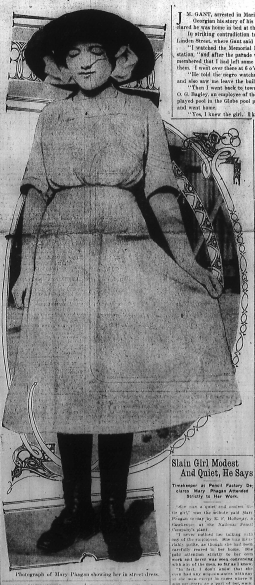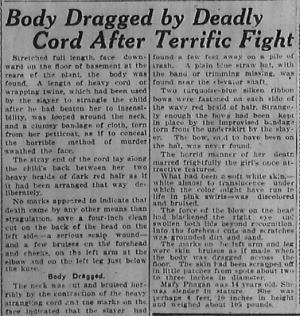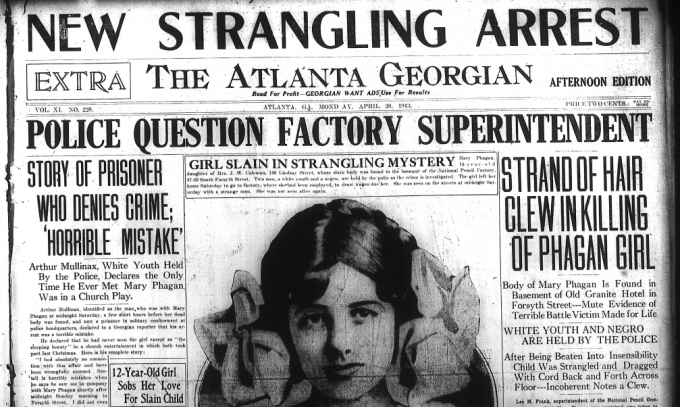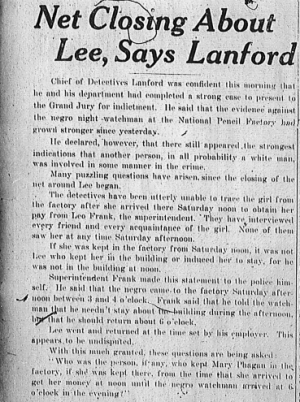 Another in our series of new transcriptions of contemporary articles on the Leo Frank case.
Another in our series of new transcriptions of contemporary articles on the Leo Frank case.
Atlanta Georgian
Wednesday, April 30th, 1913
Chief of Detectives Lanford was confident this morning that he and his department had completed a strong case to present to the Grand Jury for indictment. He said that the evidence against the negro night-watchman at the National Pencil Factory had grown stronger since yesterday.
He declared, however, that there still appeared the strongest indications that another person, in all probability a white man, was involved in some manner in the crime.
Many puzzling questions have arisen, since the closing of the net around Lee began.
The detectives have been utterly unable to trace the girl from the factory after she arrived there Saturday noon to obtain her pay from Leo Frank, the superintendent. They have interviewed every friend and every acquaintance of the girl. None of them saw her at any time Saturday afternoon.
If she was kept in the factory from Saturday noon, it was not Lee who kept her in the building or induced her to stay, for he was not in the building at noon. Continue Reading →

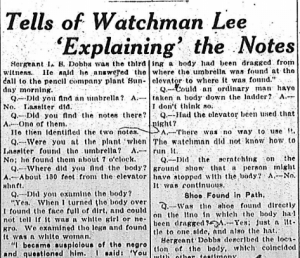
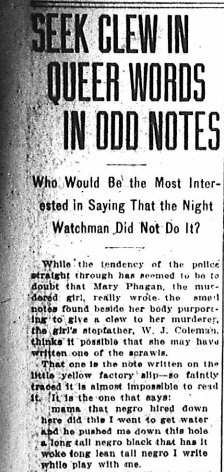
![Gantt reading murder warrant [John M. Gantt was a family friend of Mary Phagan's and was accused of being "infatuated" with the young girl. He was let into the factory on Saturday to retrieve pairs of shoes he had left there prior to his leaving the company. Newt Lee accompanied him as he retrieved his shoes and left Saturday afternoon -- Ed.]](https://www.leofrank.org/wp-content/uploads/2016/02/Factory-Employe-May-Be-Taken-Any-Moment-300x483.png)
